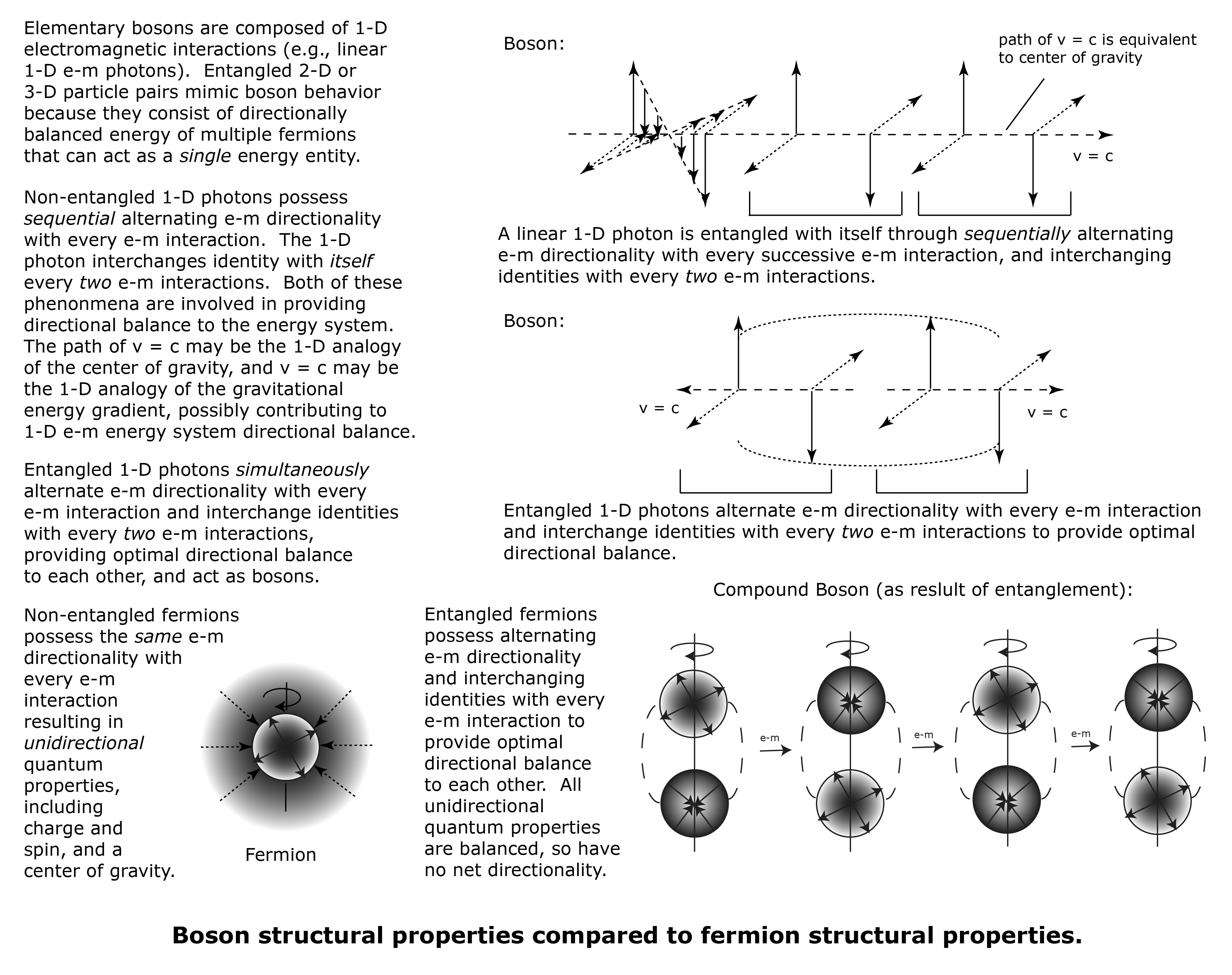 “True” bosons are photons, consisting of 1-D electromagnetic interactions. True bosons do not possess gravitational energy gradients. Because gravitational energy gradients are composed of 1-D basic units of the energy of space occupying 2-D or 3-D space, 1-D photons cannot be directionally balanced by them.
“True” bosons are photons, consisting of 1-D electromagnetic interactions. True bosons do not possess gravitational energy gradients. Because gravitational energy gradients are composed of 1-D basic units of the energy of space occupying 2-D or 3-D space, 1-D photons cannot be directionally balanced by them.
Non-entangled 1-D photons possess sequential alternating e-m directionality with every e-m interaction. The 1-D photon interchanges identity with itself every two e-m interactions. Both of these properties help provide directional balance to the 1-D electromagnetic energy system. The “velocity” v = c is along a path that is analogous to the center of gravity for 2-D or 3-D energy systems, and v = c may be the 1-D analogy to a gravitational energy gradient.
Entangled 1-D photons simultaneously alternate e-m directionality, providing directional balance to each other. However, entangled 1-D photons only interchange identities once every two e-m interactions, unlike entangled 2-D e-m particles that interchange identities every e-m interaction.
“Compound” bosons, composed of even numbers of elementary 2-D e-+/e+- particles, mimic the properties of “true” bosons, because they represent structures with optimal directional balance. As a result, multiple entangled 2-D particles can act as a single energy entity (e.g., as in the case of ‘orbital e-+ particles’ occupying the same atomic orbital, such as 2p, 3p or 3d).
Entangled fermions possess simultaneously alternating e-m directionality (i.e., e- and e+) and interchanging identities with every e-m interaction to provide optimal directional balance to each other.
Non-entangled fermions possess the same e-m directionality with every e-m interaction, resulting in unidirectional quantum properties, including charge, spin, time, and distance. A non-entangled fermion does not possess sequential alternating e-m directionality or interchanging identity with itself, and is therefore attracted to an opposing energy system (another fermion) to achieve directional balance, or moves away (repelled) from energy (i.e., a fermion with same directionality) that would create a higher energy level or directional imbalance.
